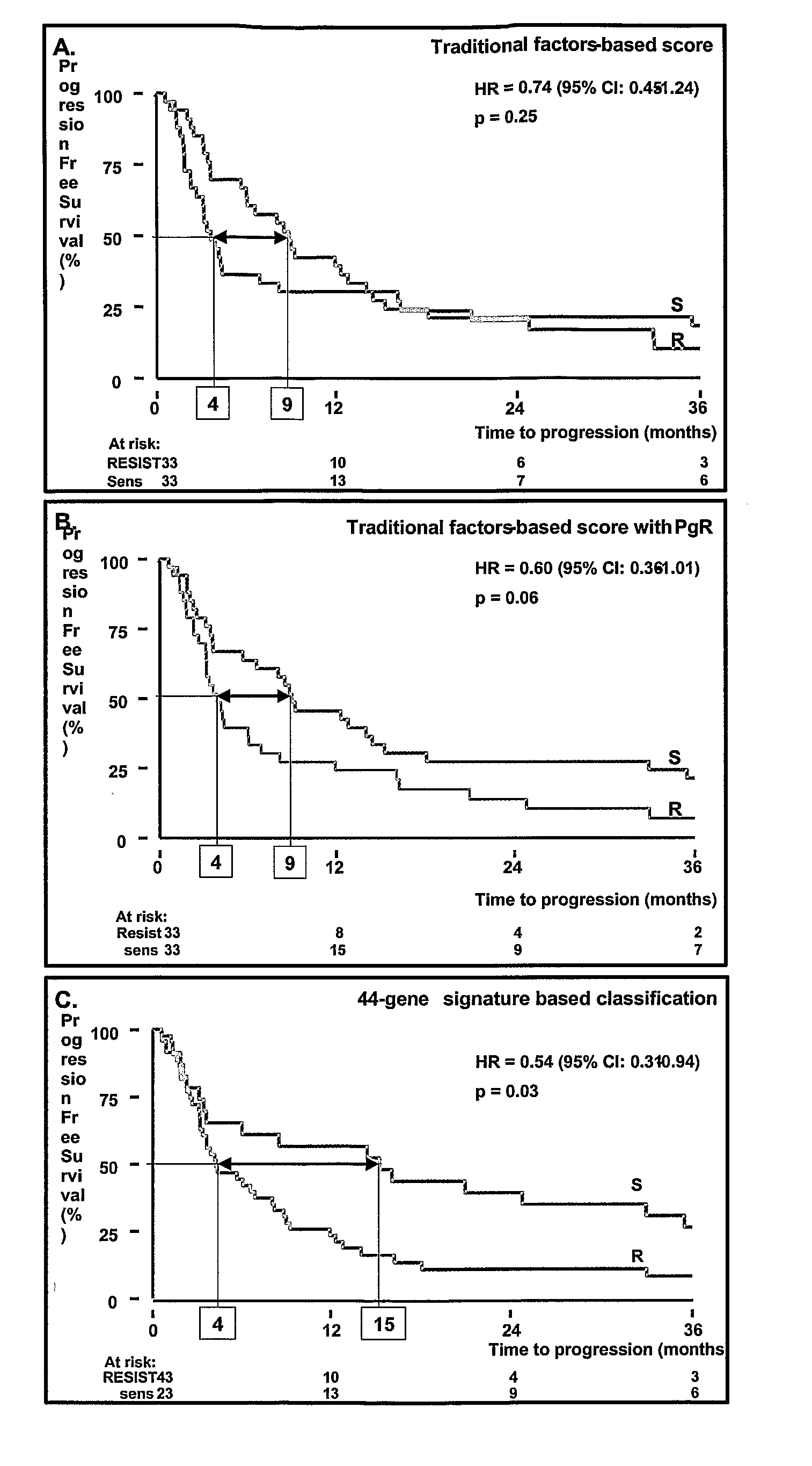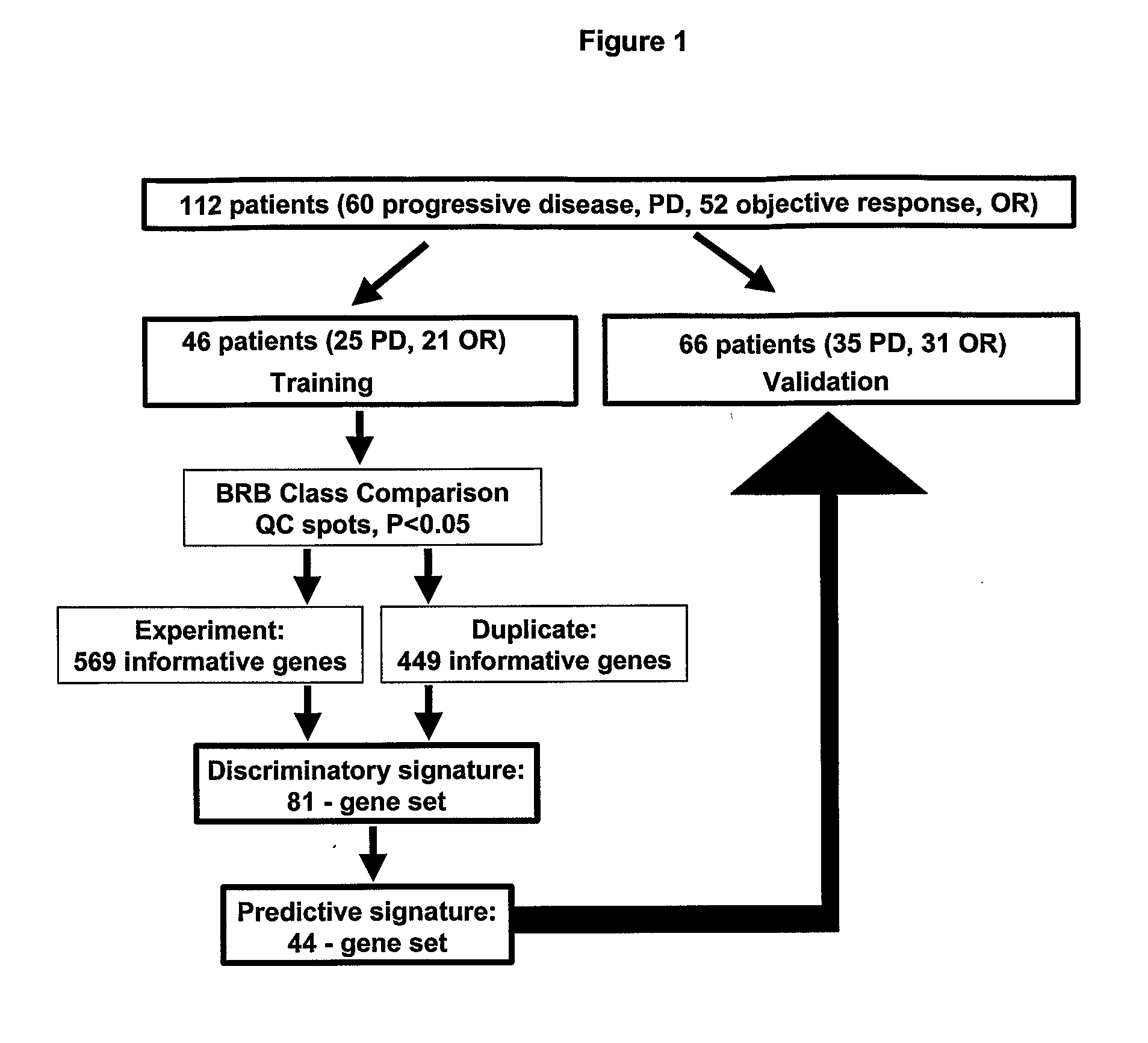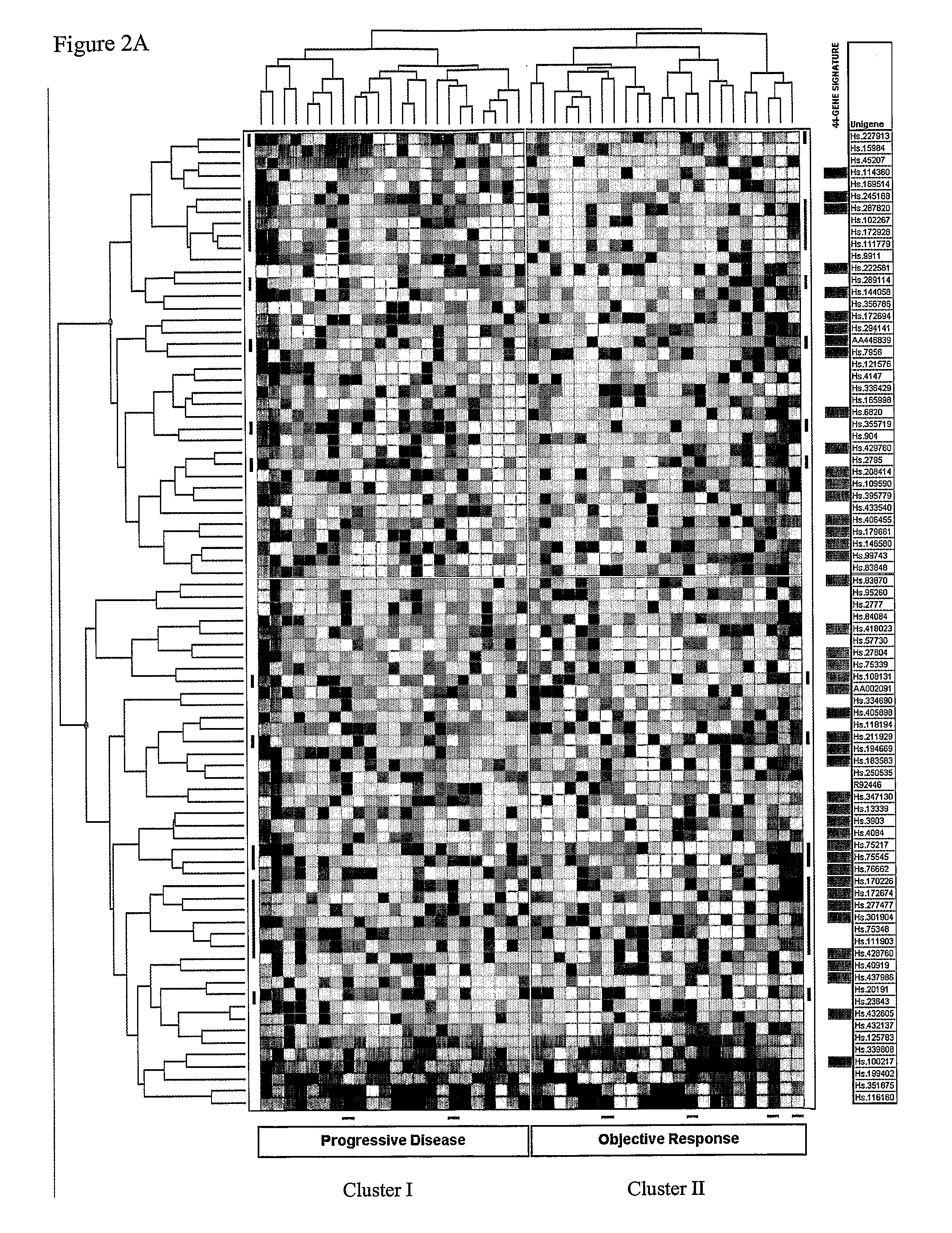Predicting Response And Outcome Of Metastatic Breast Cancer Anti-Estrogen Therapy
a metastatic breast cancer and anti-estrogen technology, applied in the direction of sugar derivatives, biochemistry apparatus and processes, instruments, etc., can solve the problems of high resistance to anti-estrogens and low response rate in patients with er--negative primary tumors
- Summary
- Abstract
- Description
- Claims
- Application Information
AI Technical Summary
Benefits of technology
Problems solved by technology
Method used
Image
Examples
example 1
Identification of a Predictive Gene Signature
[0046]The Examples below describe studies undertaken to determine the measurable effect of anti-estrogen, for example, tamoxiphen therapy for breast cancer on tumor size and on time until tumor progression (progression free survival). The analysis was performed on 112 estrogen receptor positive primary breast cancer samples from patients who developed advanced disease that showed the most pronounced types of response (objective response versus progressive disease from the start of treatment). In addition, these studies describe underlying gene (signaling) pathways that provide novel potential targets for therapeutic intervention.
METHODS
[0047]Patients and Treatment The study design was approved by the medical ethical committee of the Erasmus MC Rotterdam, the Netherlands (EC 02.953). To evaluate the predictive value of gene-expression profiling in relation to tamoxifen treatment in patients with recurrent breast cancer, 112 fresh frozen ER...
example 2
Validation of Predictive Gene Signature: Correlation to Clinical Response and Time to Treatment Failure
Type of Response
[0065]In a validation set of 66 tumors, the predictive 44-gene signature correctly classified 27 of 35 patients with progressive disease (77% sensitivity, 95% CI: 0.59-0.89) and 15 of 31 patients with objective response (48% specificity, 95% CI: 0.31-0.67) with an odds ratio of 3.16 (95% CI: 1.10-9.11, p=0.03). In univariate analysis for response, the predictive signature appeared to be superior, i.e. more than 2-fold higher odds ratio, to most traditional factors (i.e. menopausal status, disease-free interval, first dominant site of relapse, estrogen and progesterone receptor status), of which only estrogen receptor-level (odds ratio, 1.54; 95% CI: 1.00-2.40; p=0.05) and progesterone receptor-level (odds ratio, 1.37; 95% CI: 1.05-1.79; p=0.02) showed significant predictive value. In multivariate analysis for response, the signature-based classification did not sign...
example 3
Independent Confirmation Of Gene-Expression
[0067]The mRNA expression levels of 8 genes of the 81-gene signature were analyzed by quantitative real-time PCR. The genes included: CASP2, DLX2, USP9X, CHD6, MST4, RABEP, SIAH2, and TNC. qPCR data was correlated with microarray data. Spearman rank correlations were positive for all genes but MST4.
PUM
| Property | Measurement | Unit |
|---|---|---|
| survival-time | aaaaa | aaaaa |
| survival-time | aaaaa | aaaaa |
| fluidity | aaaaa | aaaaa |
Abstract
Description
Claims
Application Information
 Login to View More
Login to View More - R&D
- Intellectual Property
- Life Sciences
- Materials
- Tech Scout
- Unparalleled Data Quality
- Higher Quality Content
- 60% Fewer Hallucinations
Browse by: Latest US Patents, China's latest patents, Technical Efficacy Thesaurus, Application Domain, Technology Topic, Popular Technical Reports.
© 2025 PatSnap. All rights reserved.Legal|Privacy policy|Modern Slavery Act Transparency Statement|Sitemap|About US| Contact US: help@patsnap.com



